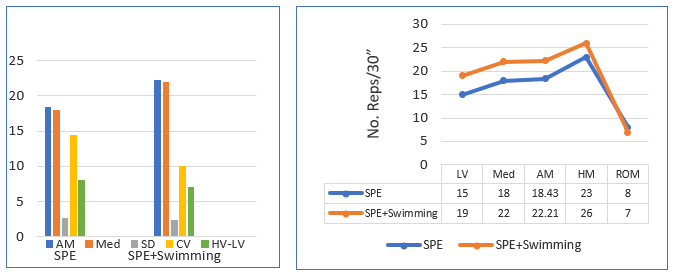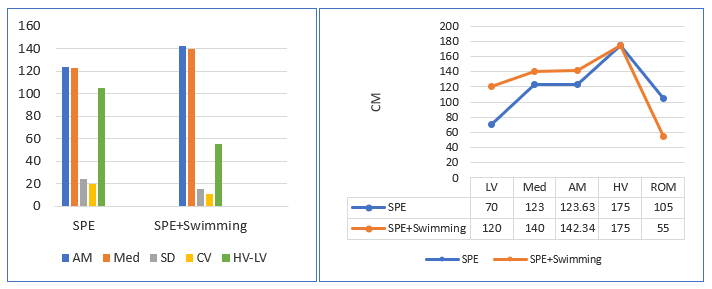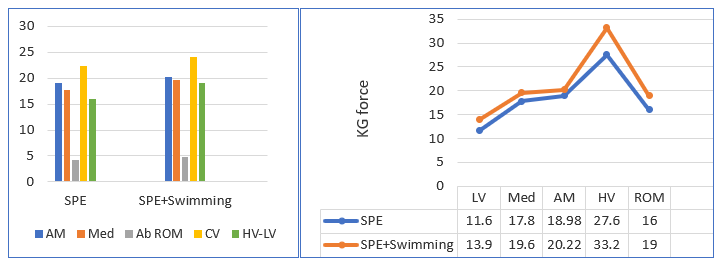Abstract
Today, we see a progressive concern for children’s health and the development of their skills and abilities in order to integrate and adapt them to the natural and social environment. From the desire to have an easy and comfortable life, the crisis of the 21st century society and sometimes the exacerbated technology have led to the creation of false or harmful needs for the growth and development of children as regards the four defining frameworks: physical, motor, mental and socio-cultural ones. At the same time, we found an acute need for movement among schoolchildren whose physical education classes have been reduced and whose priorities and concerns have been severely transformed. Our topic will have as a central pillar the bio-psycho-motor and socio-cultural growth and development of children at a vulnerable age of particular importance, determined by the changes and acquisitions according to the pre-pubertal period. The seven-year period of parenting education is followed by its use in the first years of school. Due to the fact that school physical education classes have been reduced, it is imperative to involve children in physical activity outside of the curricular area, which will lead to an improvement in their bio-psycho-motor, socio-affective and cultural condition. We will start from the general premise that any subsidiary complementary physical education activity related to the school curriculum creates benefits in terms of the psychomotor potential of pre-pubertal children, which will improve their overall fitness status, general coordination and health.
Keywords: Bio-psycho-motor developmentskillsabilitiespre-pubertal children
Introduction
Our topic will have as a central pillar the bio-psycho-motor and socio-cultural growth and development of children at a vulnerable age of particular importance, determined by the changes and acquisitions according to the pre-pubertal period. The seven-year period of parenting education is followed by its use in the first years of school. This is why children should be placed in the right direction by their teachers and educators in order to perfect and optimise all aspects related to a child’s conduct and future. Due to the fact that school physical education classes have been reduced, it is imperative to involve children in physical activity outside of the curricular area, which will lead to an improvement in their bio-psycho-motor, socio-affective and cultural condition. We will start from the general premise that any subsidiary complementary physical education activity related to the school curriculum creates benefits in terms of the psychomotor potential of pre-pubertal children, which will improve their overall fitness status, general coordination and health.
Epuran (1976) grouped psychomotor skills in:
Special abilities: kinaesthetic sensitivity, coordination, balance, spatial orientation, reaction and execution speed etc.;
General abilities: cognitive system (understanding and mastering the motor task proposed, generating feedback, choosing and applying the proper solution in different situations).
Psychomotor learning is the relationship between
In Romania, the psychomotricity aspects have been superficially analysed and debated, especially in terms of children. As a matter of fact, the effects of psychomotricity on child adaptation and integration have barely been addressed and with no solid ground and proven work. It is true that a few books have been written and a few studies have been carried out on the influence of sport on the human body, and each time they highlighted the harmonious physical development, the increased physical ability and the improved skills. They also dealt with swimming, its indisputable benefits on the human body and its functions. But studies and speculations were strictly limited to this approach. And as far as children are concerned, they are even harder to find from this point forward. Thus, our topic aims to go beyond these barriers and provide a much broader and deeper vision of the particularly important influence that sport - especially swimming - has on children in terms of intellectual, emotional and social skills, with high relevance for their future. Recent studies show that simple physical exercise develops certain skills and competencies indispensable to a child in everyday life, at school, in the family and ultimately in society. The best books in the world currently speak about the formation of new brain connections following physical exercise, which will significantly influence the intelligence, cognition and feedback of the child. (Ratey & Hagerman, 2008, pp. 4-6)
The main objective of the research
The main objective of our research is to identify and promote swimming as a sports discipline that is subsidiary to school physical education and its implementation in the daily life of primary school students by capitalising on the physical and mental potential and determining the motricity, psychomotricity and sociocultural differences in children with ages between 9-11 years. “Mens sana in corpore sano”, meaning “A healthy mind in a healthy body” is a slogan that we see written on many benches at various competitions or even on the walls of sports halls. This slogan was formulated since the early centuries of our era by the poet Juvenal, who had this revelation about the famous gladiator battles. This desideratum accompanies us and is still confirmed, translating into a desire for balance, a happy life, into an ideal to be followed, because “a healthy body is the bearer of a healthy mind, even the architect of it” (Epuran, 2011).
Problem Statement
If physical activity improves the quality of life and we know that swimming is the proper activity for pre-pubertal children, we can state that swimming is the best way to improve our children’s lives.
Research Questions
The integration of weekly physical activities - swimming - complementary to school physical education creates benefits for some psychomotor parameters that describe general fitness.
Purpose of the Study
-
Determining the general fitness status of the subjects in the 2 groups - physical education and swimming, following the application of three tests and measurements;
-
Highlighting that a weekly physical activity - swimming - subsidiary to physical education contributes to an improvement in the value of motor qualities, skills and competences that underpin the overall fitness status.
Research Methods
The research subjects
The subjects included in the research are represented by 2 groups:
Children who have as weekly physical activity only physical education classes related to the school curriculum - school physical education control group (SPE). We specify that, in the case of this group, the teacher of physical education and sports worked according to the school curriculum based on the classes in primary grades;
Children who, besides school physical education classes, have swimming as facultative physical activity - school physical education and swimming experimental group (SPE + Swimming). We specify that, in this group, the training methods did not respect the basic principles of performance sports training, but the work was done according to the schedule of the initiation stage - beginners, with exercises aimed to improve and develop the floating technique, the basic swimming technique and, in general, the abilities to move in the water safely and efficiently. The primary objective of the swimming teacher was to teach each child at least one swimming method, helping them to acquire a proper technique and increase their endurance for being able to swim as much as possible within one hour/lesson. Water games were also used to diversify the class. The children in this group worked at different frequencies (from 1-3/week).
Each of the 2 groups was composed of 23 subjects in 4th grade, girls and boys aged 10 to 11 years.
The main methods used
-
Experimental method: an ascertaining pedagogical experiment with two variables, which implied obtaining certain values following the application of some tests to the two groups, the analysis being made on the physical and motor planes of the children from the two groups;
-
Statistical and mathematical method: arithmetic mean (AM), median (Med), standard deviation (SD), coefficient of variation (CV), absolute range of motion (ROM);
-
Graphical method;
-
Tests:
-
Flexion of the trunk from the supine position (muscle endurance and execution speed at the abdomen level). We measure and evaluate strength, muscle contraction speed, as well as endurance in the abdominal muscles, which is very important in maintaining a correct orthostatic position and performing all movements with ease and efficiency;
-
Standing long jump (explosive power in the lower limbs). We measure and evaluate muscle tone in the lower limbs, on which balance and any form of movement - walking, running and the performance of other daily activities depend.
Dynamometric measurement (static power in the upper limbs). We evaluate and measure maximal voluntary strength of muscle contraction in the arms, which can be maintained during an isometric contraction for a period of 3-4 seconds. This is very important, given the need for good muscle tone in the upper limbs, on which all activities in everyday life depend.
Findings

For this item, we note that averages and median values have different values, with a significant difference in favour of the experimental group. Also, the experimental group has a better homogeneity in what regards the dispersion around the average, due to the values of the standard deviation and the coefficient of variation. In terms of extreme values, the experiment group has an advantage of 3 sit-ups, in the case of the highest value, and 4 sit-ups, in the case of the lowest value. From the point of view of the absolute range of motion, we find a slightly better homogeneity in the experimental group. The assertions are supported by the values in Table

For this item, we note that the average and median values are significantly higher in the experimental group. The values of the standard deviation and the coefficient of variation show that there is a higher net homogeneity in the experimental group in terms of dispersion around the average. Both groups recorded a maximum value of 175 cm, but, in the case of the worst result, again the experimental group had a significant advantage of 50 cm. From the point of view of the absolute range of motion, we find a net superior homogeneity in the experimental group. The assertions are supported by the values in Table

For this item, we observe that the values obtained by both groups in the case of averages and medians are very close, with a subtle increase in the experimental group. However, according to the values of the standard deviation and the coefficient of variation, we find that, in this case, the control group has a slightly better value of dispersion around the average. The difference between the highest values in both groups is 5.6 kg in favour of the experimental group. With respect to the lowest values, the difference is significantly lower, namely 2.3 kg in favour of the experimental group. From the point of view of the absolute range of motion, we find a slightly stronger homogeneity in the control group. The assertions are supported by the values in Table
Conclusion
Based on the data obtained, we noticed that the experimental group recorded superior values in all six tests and measurements in terms of averages, medians and values, revealing a better homogeneity in terms of range of motion and dispersion around the averages, but also the deviation generated by the statistical calculation. In addition, apart from the two tests mentioned above, we also made measurements using four other tests: EUROFIT test, Matorin test, crunches in 30 seconds, reaction speed test. All tests were selected from
Acknowledgments
Authors’ contributions
All authors contributed equally to this study and should be considered as main authors.
References
- Epuran, M. (2011). Motricitate și psihism în activitățile corporale. București: Fest.
- Epuran, M. (1976). Psihologia educaţiei fizice. București: Sport-Turism.
- Mackenzie, B. (2015). 101 performance evaluation tests (2nd ed.). Green Star Media Ltd.
- Marinescu, Gh., & Hoanță, D. I. (2010). Studiu cu privire la ameliorarea calităților motrice la copii nivel II – Înot. UNEFS București.
- Ratey, J. J., & Hagerman, E. (2008). Spark: The revolutionary new science of exercise and the brain. New York, NY, US: Little, Brown and Co.
Copyright information

This work is licensed under a Creative Commons Attribution-NonCommercial-NoDerivatives 4.0 International License.
About this article
Publication Date
16 February 2019
Article Doi
eBook ISBN
978-1-80296-054-9
Publisher
Future Academy
Volume
55
Print ISBN (optional)
-
Edition Number
1st Edition
Pages
1-752
Subjects
Sports, sport science, physical education
Cite this article as:
Hoanță, D., Marinescu, G., Ticală, L., & Rădulescu, A. (2019). Bio-Psycho-Motor Particularities In Pre-Pubertal Children And The Influence Of Swimming On Them. In V. Grigore, M. Stănescu, M. Stoicescu, & L. Popescu (Eds.), Education and Sports Science in the 21st Century, vol 55. European Proceedings of Social and Behavioural Sciences (pp. 122-128). Future Academy. https://doi.org/10.15405/epsbs.2019.02.15
